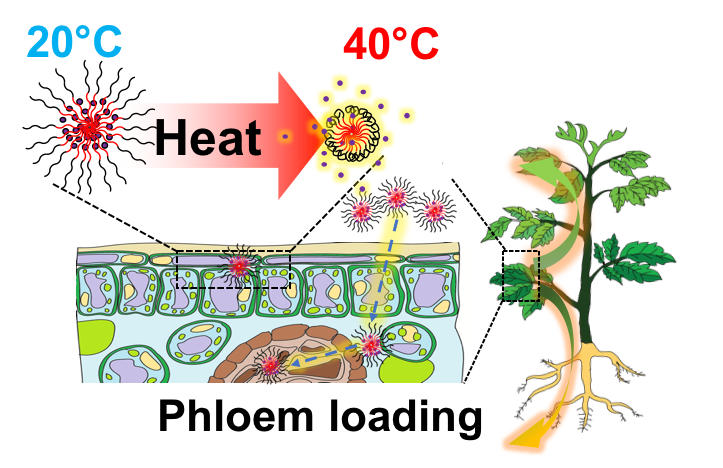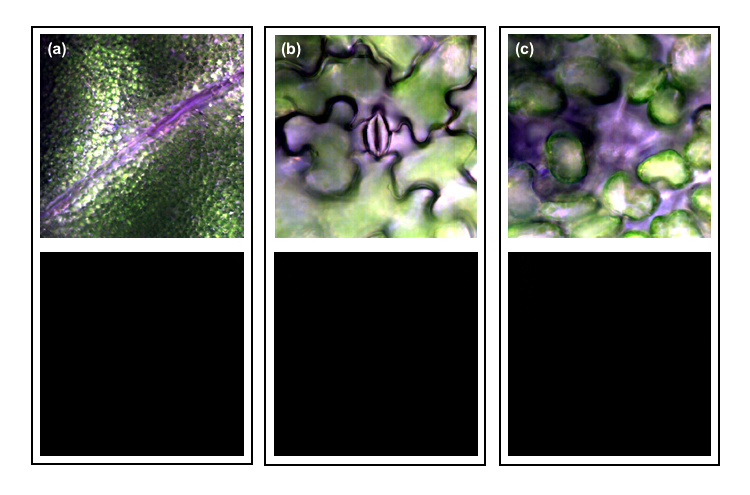Nanoparticles to immunize plants against heat stress
Greg Lowry and Bob Tilton have created a new type of nanoparticle that may be able to immunize plants against harsh environmental conditions and pathogens.
Greg Lowry and his team are creating nanoparticles (NP) and NP coatings that will revolutionize the agricultural industry. Already, his research has demonstrated that NPs that are coated with the right polymers can be applied to plant leaves with 99 percent uptake—orders of magnitude more efficient than current agrochemical delivery methods. Their NP’s are also able to target specific plant structures with pinpoint accuracy.
Now, as the next step in the emerging field he’s coined “plant therapeutics,” Lowry, a professor of civil and environmental engineering, and Bob Tilton, a professor of chemical engineering are working to “immunize” plants against some of the greatest stress factors in agriculture: drought and extreme heat. In their recent paper in ACS Nano, they’ve detailed the first ever demonstration of a temperature-programmed release of a model antimicrobial agent within a plant.
Our materials are designed so they can bind heat stress relief agents and release them inside the plant on demand when it becomes very hot.
Bob Tilton, Professor, Chemical Engineering
“Prolonged high temperatures can induce stress in crop plants,” says Tilton. “Our materials are designed so they can bind heat stress relief agents and release them inside the plant on demand when it becomes very hot.”

Source: Carnegie Mellon University
NPs are absorbed into the plant and release their contents under high temperature conditions.
The NPs are a new type of star polymer. Each NP contains a model antimicrobial agent known as crystal violet (CV). The team sprayed the NP’s onto tomato leaves, observing similarly high absorption rates to those in Lowry’s prior research, which then circulated throughout the entire plant over the next three days. The programmed release properties then became active once temperatures within the plant reached 35-40 degrees Celsius, causing the NPs to release their cargo of CV throughout the plant’s interior.
Drought and extreme heat can kill plants, as well as making them highly susceptible to both biotic and abiotic threats. As global warming continues to increase the length and severity of heat waves, the difficulties for the agricultural industry will only grow. Tilton and Lowry’s star polymers will lie dormant in plants until heat waves hit, at which point they will activate to release antimicrobial agents like CV to give the plant the added boost they need to survive these high-stress periods. They’re now looking at inserting other therapeutics into plants that could not only help them fight off dangerous pathogens during periods of heat stress, but could actually mitigate the heat stress itself by stimulating photosynthesis within.

Source: Carnegie Mellon University
(Top) Control images of the leaf surface (a), stomata and epidermis cells (b) , and stomatal cavity and the mesophyll cells (c). (Bottom) Spectral angle mapping test indicating remaining NPs in red: lack of color indicates complete absorption.
“Polymers with qualitatively similar characteristics have been investigated for use as drug delivery vehicles for medical therapies,” says Tilton. “Of course, the conditions under which drug delivery vehicles and agrochemical vehicles must work, and the types of physical and chemical signals that can be exploited for stimulus-responsive release of the active agents, are quite different. The key was to design the right chemical properties into our vehicles to suit the crop protection applications.”
As the climate changes, arable land shrinks, and populations continue to grow, maximizing the efficacy of agriculture has never been more crucial. The high absorption rates and array of applications for plant protection and nourishment offered by plant therapeutics may well be the key to offsetting these monumental forces. As Lowry and peers outlined in a recent article in Nature Food, agricultural nanotechnology is on the cusp of moving from the engineer’s lab into the farmer’s plot. However, the field still requires greater investment and effort to push testing into the field scale to demonstrate the efficacy and economic viability of revolutionary technology like the team’s NPs.
